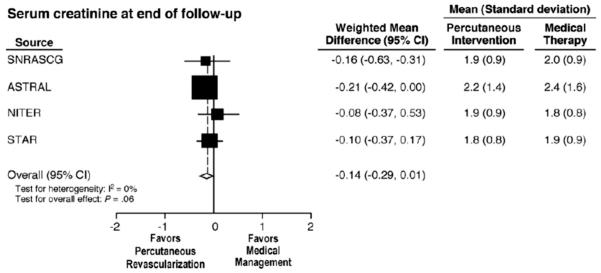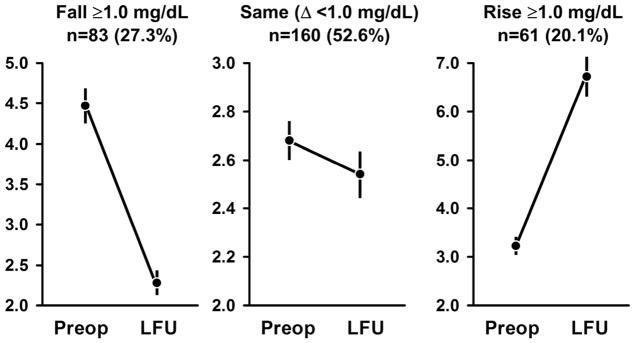Figure 2.
(A) Meta-analysis of 4 randomized, controlled trials evaluating serial measurements of creatinine in patients treated either with angioplasty (SNRASG) or angioplasty and stenting. Mean values did not change during the follow-up periods reported. A subgroup of 20–28% of subjects were not revascularized in ASTRAL or STAR as assigned, mainly because finding only trivial stenosis at the time of angiography (see Text). (from [105] with permission.
(B) Serum creatinine levels before and after renal revascularization (mean f/u 28 mos) in 304 subjects with initial serum creatinine level above 2.0 mg/dL. These data underscore the differences with subgroups that are masked by group averages, which did not change overall. It should be emphasized that all of these underwent revascularization based upon clinician judgement as to likely benefit and were not randomized. A fall of more than 1.0 mg/dL was considered to be a meaningful decline, which occurred in 27.3% of this group (left panel). Most had little change (middle) panel, but the slight more than 20% experienced a rise of more than 1.0 mg/dL. of patients whose creatinine rose with significant deterioration of kidney function. Nearly all series of results from endovascular or surgical revascularization contain some variation these patterns, dependent in part on starting level of GFR and the degree of change in kidney function deemed significant. Some of the loss of GFR is likely related to atheroembolic complications which may be less common than before, partly related to improved technical expertise (see text). Reproduced from [151] with permission.


